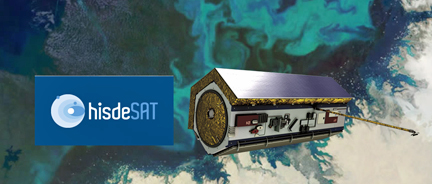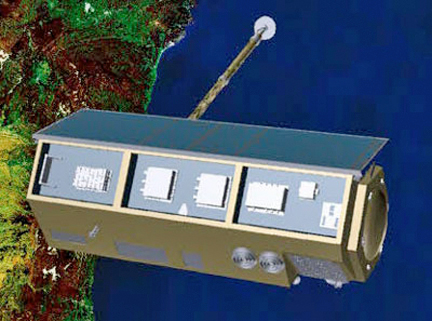 [SatNews] Astrium and Hisdesat have completed the production and integration process for the PAZ satellite in Madrid.
[SatNews] Astrium and Hisdesat have completed the production and integration process for the PAZ satellite in Madrid.
 The announcement was made at a ceremonial act celebrated in the Astrium Barajas premises, in presence of the Defence Secretary of State, Mr. Pedro Argüelles. PAZ is designed to cover not only security and defence needs but also civil applications. It will be able to take more than 100 images each day with up to 1 metre resolution, day and night and irrespective of meteorological conditions. Designed for a mission lasting five and a half years, PAZ will cover an area of over 300,000 square kilometres per day. It is configured to make fifteen orbits of the Earth each day at an altitude of 514 kilometres and at a velocity of seven kilometres per second (25.200 km per hour). On its slightly inclined quasi-polar orbit, PAZ will cover the entire globe on average in 24 hours.
The announcement was made at a ceremonial act celebrated in the Astrium Barajas premises, in presence of the Defence Secretary of State, Mr. Pedro Argüelles. PAZ is designed to cover not only security and defence needs but also civil applications. It will be able to take more than 100 images each day with up to 1 metre resolution, day and night and irrespective of meteorological conditions. Designed for a mission lasting five and a half years, PAZ will cover an area of over 300,000 square kilometres per day. It is configured to make fifteen orbits of the Earth each day at an altitude of 514 kilometres and at a velocity of seven kilometres per second (25.200 km per hour). On its slightly inclined quasi-polar orbit, PAZ will cover the entire globe on average in 24 hours.

Artistic rendition of the PAZ satellite.
Hisdesat is the owner, operator and user of the PAZ satellite, which will offer precise information for multiple applications from its polar orbit. PAZ is scheduled for launch in 2014 on board the Russian launcher Dnepr, under the contract signed with the Russian company KOSMOTRAS.
The Spanish space industry was heavily involved in the project, with 18 companies providing components. The creation of skilled jobs over these years, the commitment to Spanish research, development and innovation, and the public-private partnership with Central Government have all served to make the PAZ program a success story for Spain’s industrial development.
“In such a complex sector requiring huge investments, the exhaustive planning of innovative, sophisticated and complex projects is essential to ensure their successful completion”, said Miguel Ángel Panduro, CEO of Hisdesat, “PAZ is a shining example of this type of careful planning.”
“The successful integration of the PAZ satellite on time is the latest success story for the European space industry. Spain has demonstrated with PAZ and soon with, Ingenio, that its industry is one of the leading five European nations with outstanding space related capabilities”, added Antonio Cuadrado, Head of Astrium in Spain. “Once in space, PAZ will share the same orbit as TerraSAR-X and they will be operated as a genuine constellation providing a broad range of services, such as: reduced revisit time, enhanced acquisition capacity, identical image characteristics and modes of acquisition (including the new StaringSpotLight and Wide ScanSAR specifically for IMINT –Imagery Intelligence- and maritime monitoring applications), easy ordering and direct access services.”
As prime contractor, Astrium led a large consortium of space industry sector companies for the integration of the satellite at its facilities in Madrid. It has also developed the radar’s front section, the antenna of which constitutes one of the satellite’s most important and innovative components, using multi-layered printed circuits and radiators.
Since construction began, the PAZ satellite has been generating significant returns on investment for the Spanish space industry companies involved, allowing them to develop new capabilities that further enhance their competitiveness in the global space market. The new satellite will also enable Spain to significantly improve its position in the European Global Monitoring for Environment and Security programme (Copernicus/GMES), the main initiative in Earth observation led jointly by the European Union and the European Space Agency (ESA).

